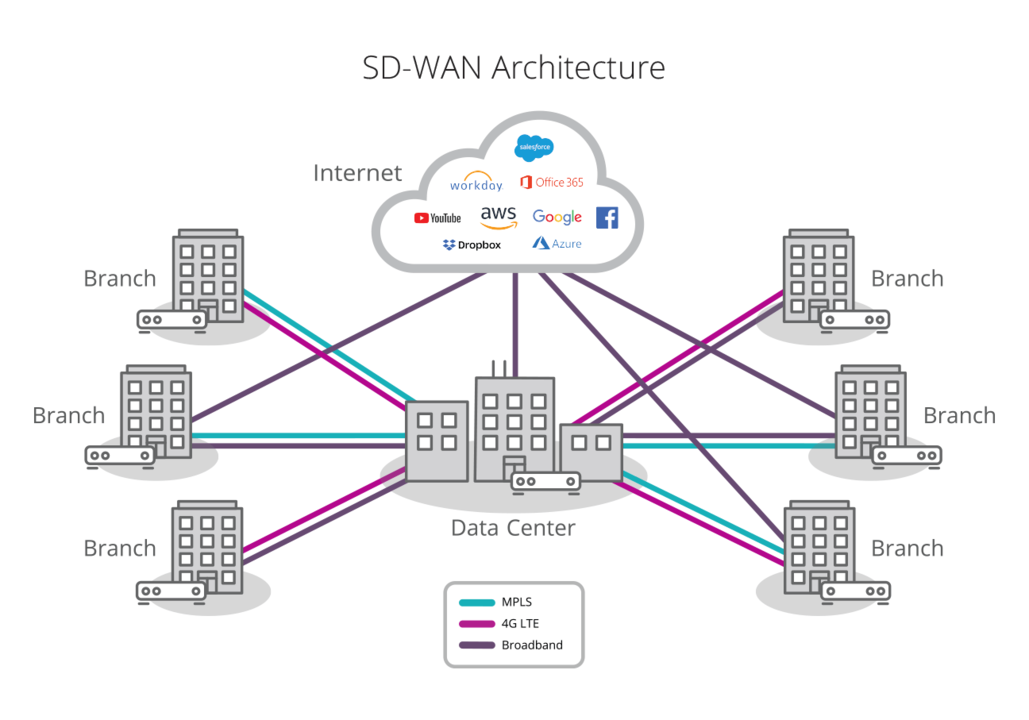
Software-Defined Wide Area Network (SD-WAN)
The modern workforce is increasingly mobile, and business-critical applications are running over the Internet across multiple clouds. Traditional WAN architectures can’t keep up, because of lack of available bandwidth, limited security, and increased complexity, which prevents IT from responding to business needs faster.
The software-defined wide-area network (SD-WAN or SDWAN) is a specific application of software-defined networking (SDN) technology applied to WAN connections such as broadband internet, 4G, LTE, or MPLS. It connects enterprise networks – including branch offices and data centers – over large geographic distances.
A WAN might be used, for example, to connect branch offices to a central corporate network, or to connect data centers separated by distance. In the past, WAN connections often used technology that required special proprietary hardware. SD-WAN, on the other hand, utilizes the internet or cloud-native private network. SD-WAN decouples the network from the management plane and detaches the traffic management and monitoring functions from hardware. It relies on four central components:
Edge Connectivity Abstraction
WAN Virtualization
Policy-Driven, Centralized Management
Elastic Traffic Management
SD-WAN is a fairly new development in the market that came about as a way to leverage existing hybrid WAN architectures by using a centralized application-based policy controller with analytics for application and network visibility as well as a software overlay. Some SD-WAN architectures include an SD-WAN forwarder that provides intelligent path selection across WAN links.
SD-WAN is growing in popularity because it makes delivery of business applications more cost effective and also improves branch-IT efficiency through automation. It also allows enterprises to reduce their MPLS costs, which is why so many companies are planning to migrate to SD-WAN in the coming year.
Gartner identifies the key players in SD-WAN technology in its 2018 Magic Quadrant for WAN Edge Infrastructure Report. It named three leaders: Silver Peak, Cisco, and VMware The firm also acknowledged that Riverbed, Citrix, Fortinet, Aryaka, and Huawei are strong contenders in the market as well.
Many of these vendors have slightly different approaches to the market. For example, Silver Peak focuses on accelerating Software-as-a-Service (SaaS) applications in the cloud. VMware enfolded the VeloCloud product into its own line of products, the VMware NSX SD-WAN by VeloCloud, after it acquired VeloCloud in December 2017. The product contains edge applications, orchestration, and cloud-resident gateways. Aryaka built a global network so that companies can use WAN as a Network-as-a-Service (NaaS) anywhere, even outside of it’s the area of one of Aryaka’s point of presence (POP).
Gartner predicts that by the end of 2019, 30 percent of enterprises will have deployed SD-WAN in their branch locations. And International Data Corp (IDC) estimates that worldwide SD-WAN revenues will exceed $6 billion in 2020.